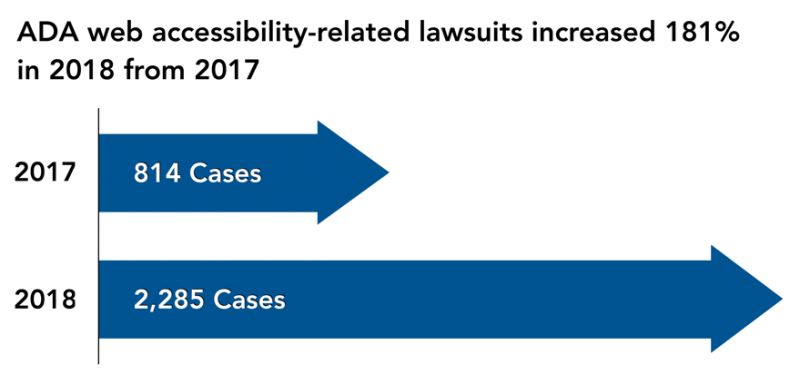
Vol. XIX, No. 9, October 2019
- Randy's travelogue
- Innovation is creating new customer experience (CX) benchmarks
- Upcoming presentations & conferences
- The customer is always right, or maybe?
- The self-commoditization of OOH entertainment experiences
- Is your website ADA compliant? The Supreme Court rules it better be
- Our basic instinct of imitation is not always so beneficial
- Fast growing plant-forward flexitarian trend
- Video games a force for sustainable social change; it's time for CLVs & FECs to join
- Refreshing kids' menus
Is your website ADA compliant? The Supreme Court rules it better be
The shift of our economy from physical bricks-and-mortar to digital online commerce has led to an expanded interpretation that the Americans with Disabilities Act (ADA).
Title III of the ADA prohibits discrimination against the disabled in places of public accommodation, including the blind and visually impaired. As originally enacted, the ADA did not expressly include websites as places of "public accommodation" as the Internet was in its infancy back in 1990. Over the years, the courts have now interpreted places of "public accommodation" to not only apply to a business' physical location, but also to its digital presence, to its website.
In 2018, 2,285 lawsuits were filed against companies for failure to maintain websites that are accessible to the blind and visually impaired according to UsableNet. That's a 181% increase from 2017.

Lawsuits have been filed again companies in just about every B2C category with the largest percentages against:
- Retail - 38%
- Food service - 11%
- Travel/hospitality - 10%
- Banking/financial - 7%
- Entertainment & leisure - 7%
The U.S. Supreme Court just denied a petition from Domino's Pizza following a decision by the Ninth Circuit Court of Appeals that ruled in favor of a blind man who sued the chain when he was unable to order pizza off the Domino's website or mobile app even with screen reading technology. The Supreme Court decision leaves the original ruling in place, which maintained that the company must make its website and mobile app accessible under the 1990 Americans with Disabilities Act.
ADA lawsuits expose companies to damages, potentially costly litigation and injunctive actions. It is important for all community leisure venues from restaurants to family entertainment centers (FECs) to bowling centers to have their websites in compliance with ADA.
Blind and visually impaired individuals typically use specialized software, including screen reader technology that reads website content aloud and allows users to access and navigate websites. It is important that your website be built so it is compatible with screen reader technology. This includes making sure that any new features that are added or any updates to the website are screen reader compatible as well.
Vol. XIX, No. 9, October 2019
- Randy's travelogue
- Innovation is creating new customer experience (CX) benchmarks
- Upcoming presentations & conferences
- The customer is always right, or maybe?
- The self-commoditization of OOH entertainment experiences
- Is your website ADA compliant? The Supreme Court rules it better be
- Our basic instinct of imitation is not always so beneficial
- Fast growing plant-forward flexitarian trend
- Video games a force for sustainable social change; it's time for CLVs & FECs to join
- Refreshing kids' menus


